|
| Small Single w/ Vented Brass Cap |
| Author |
Message |
    
B. Goss
Senior Member
Username: bgoss
Post Number: 186
Registered: 12-2007
| | Posted on Monday, December 24, 2012 - 03:23 pm: | 




|
Any ideas about the identification of this little fellow? The brass cap appears to be decorative only, with head studs and nuts hidden underneath. Water pump is missing.
.
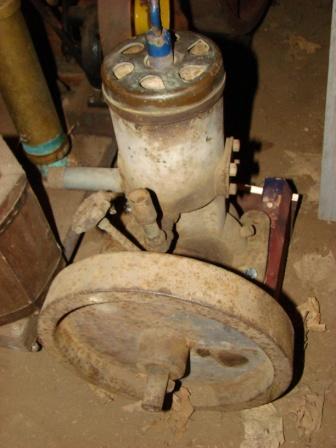 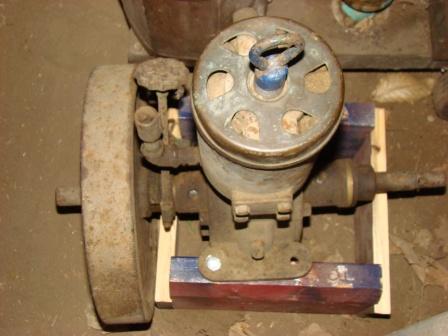
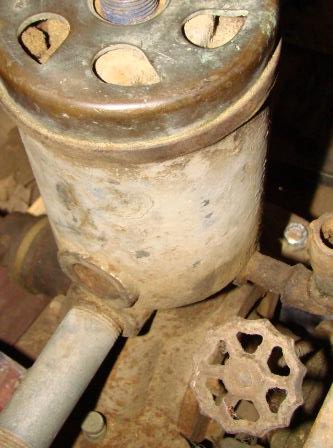 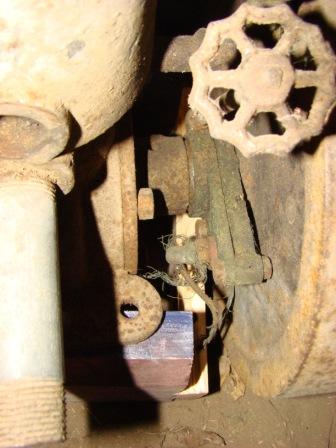
. |
    
Keith Billet
Senior Member
Username: keith
Post Number: 373
Registered: 02-2002

| | Posted on Monday, December 24, 2012 - 05:12 pm: | 




|
Watertown used a similar timer handle. |
    
Richard A. Day Jr.
Senior Member
Username: richardday
Post Number: 1039
Registered: 11-2003

| | Posted on Tuesday, December 25, 2012 - 04:37 pm: | 




|
Looks to me like it has a hot head which permitted running on kerosene once engine had come up to speed. The brass cap kept one from burning their hands etc. on the hot not water cooled head. I suspect the spark plug thread is 1/2"NPT T Ford style. |
    
B. Goss
Senior Member
Username: bgoss
Post Number: 187
Registered: 12-2007
| | Posted on Wednesday, December 26, 2012 - 09:57 am: | 




|
Thanks guys. I'll take a good look at some of the Watertown photos available. Part of the head is dry and part appears to have a water cavity, with the outlet from the rear of the head. I haven't found any holes or marks where a tag may have been attached. |
    
B. Goss
Senior Member
Username: bgoss
Post Number: 188
Registered: 12-2007
| | Posted on Thursday, December 27, 2012 - 12:20 pm: | 




|
Pulled the cap off to take a better look. The cap is cast with the inside diameter machined to fit the head.
.
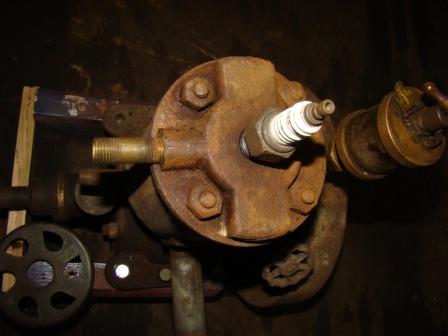
. |
    
RichardDurgee
Senior Member
Username: richarddurgee
Post Number: 2953
Registered: 11-2001
| | Posted on Thursday, December 27, 2012 - 09:43 pm: | 




|
*
There are 9 different marine engines in my list
that have the flat knob on the timer lever, after careful look at each none match your eng in the posts above !
It will go in my unknown engine file for now, it joins a growing list of engs, there are a few other "GOSS" unknowns in there !!
* |
    
B. Goss
Senior Member
Username: bgoss
Post Number: 190
Registered: 12-2007
| | Posted on Wednesday, January 02, 2013 - 09:38 pm: | 




|
Okay, I was sure that I had posted the following engine before, but I can't find it now.
The more that we look at these two side by side, the similarities are becoming more convincing. What do you think?
Same timer contacts (different knob on timer), head configuration (missing brass cap?), similar flywheel, bulged mounting lugs on base, no mounting location for waterpump but long output shaft with room for skip-link chain sprocket. This one is about twice the size of the one above.
An old-timer from up the shore, that Dad spoke with years ago, was convinced that this black engine was an early Midland engine, before they made the blind-head engines.
??
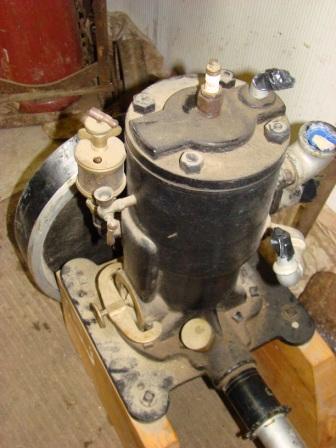 
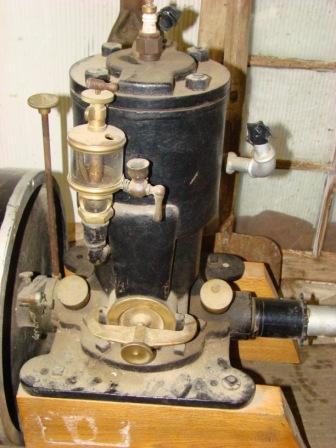
. |
    
Robert
Senior Member
Username: robert
Post Number: 500
Registered: 07-2003
| | Posted on Thursday, January 03, 2013 - 09:21 pm: | 




|
Years ago I think I posted photos of a couple of letters that were sent to Gerry Farmer (son of Weston) by a gentleman who had worked for the Midland Engine Co. I don't remember now if those letters mentioned any relevant details, or if they are still on the site here? |
    
RichardDurgee
Senior Member
Username: richarddurgee
Post Number: 2956
Registered: 11-2001
| | Posted on Monday, January 07, 2013 - 09:44 am: | 




|
*
Looking at the cylinder heads on these two engines they would appear to be from the same gene pool ?
Very possibly the same mfgr but the engines would be different models, styles or Horse power ?
Looking at photos of what are claimed to be early Midland engs with heads they don't look like the two engines posted above ?
One of the characteristics of the Early Midlands are the protruding cylinder castings for the upper water/pump rod support !
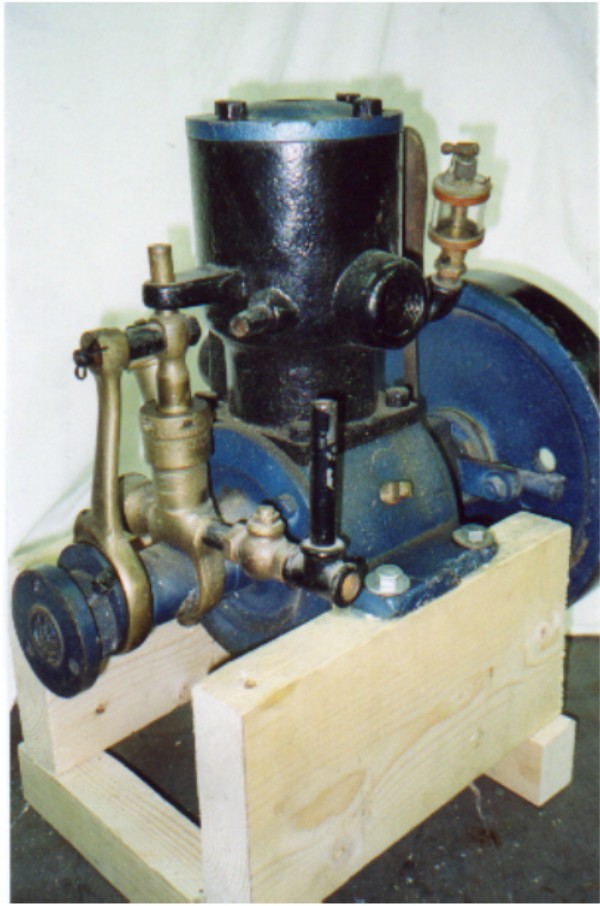
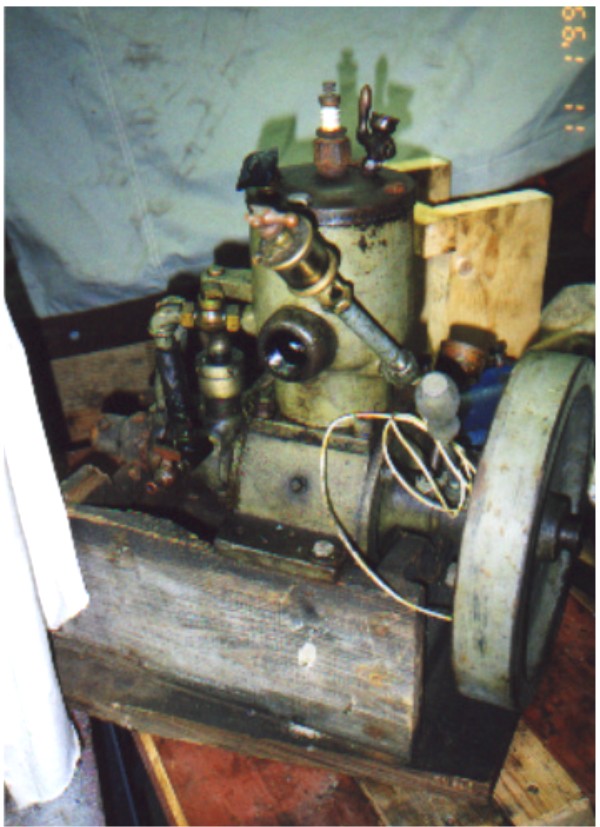
Interesting That neither of the unknown engs have a water/pump or from what I can see not much evidence of how they were mounted (maybe need better photos )?
Now I will add this second eng to my Unknown list
and maybe if we keep digging will eventually figure out what these engines are ??
Any info or photos of known early Midlands would be appreciated !
* |
    
RichardDurgee
Senior Member
Username: richarddurgee
Post Number: 2957
Registered: 11-2001
| | Posted on Monday, January 07, 2013 - 06:53 pm: | 




|
*
~~~~~~~~~~~
Newspaper article and photo original at Huronia Museum, Midland:
"Changes in Midland's Waterfront - Left to right this picture show Mr. Bruce Hanly, Mr. J.W. Bald, his son Doug, and Mr. Bert Hanly. It is interesting to note the changes in the Midland waterfront. The grain elevator to the right must be the old one that burned. Boom town! That was Midland. Up until the mid-twenties it was hard to keep up with things as saw milling gave way to ship-building, grain handling and heavy industry. Midland was a name to reckon with in the industrial life of this province. A key industry, one that helped keep all the others going was Midland Engine Works founded by James Bruce Hanly. Midland Engine Works employed a staff of skilled men, millwrights, machinists and metal workers, 150 in all including the dock crew. Millwrights for Playfair and White, they did all the CPR work as well. Bigger castings than people thought existed were turned out and the hoist was big enough to handle them. You could put a railroad flat car right through the plant. They manufactured steering winches, gears and gasoline engines, all under their own patent. Now there's nothing left to show Midland Engine Works ever existed. The moulding shop is long gone and Bayshore Drive runs over the site of the foundry just due west of Manley Street. But memories remain. I visited Mrs. Grace Hallman, Bruce Hanly's daughter, to talk about him and the Midland Engine Works. She lives in the gracious family home atop the hill on Hugel Avenue East, surrounded by family portraits and heirlooms. "I was born in the big bedroom upstairs," she says. She was her father's companion and confidant since early childhood: She grew up in the office and foundry. "My mother wanted me to be a lady," she recalls. "But I came home every day like a dirty little tramp. I loved it." "It wasn't all play though," she goes on. "I was taught to work. I wasn't much more than nine years old when I was trusted to go to the post office twice a day for the mail. There must've been thousands of dollars in cheques enclosed." Bruce Hanly was the son of Dr. John Hanly, a pioneer doctor in Waubaushene. High school was too far away and expensive, so Dr. Hanly taught his three sons himself, and they went to Orillia to write their college entrance examinations. He taught well for he produced one doctor and two engineers. Bruce Hanly distinguished himself at University of Toronto. He was in charge of erecting two of the buildings on campus while still a student and is on record in the U. of T. Archives as being "one of the finest engineers in the country." It was Midland's good fortune he chose to set up business here in 1890. With only a few hundred dollars to establish himself, he did his own building. How he would've chuckled if he'd been here when they demolished the building a few years ago. The old cement building didn't go easily for it was framed with steel rails from the Grand Trunk Railway instead of 2 x 4's! When Bert Hanly graduated from University, Bruce took him into the company where he acted as Works foreman. One of the most famous products of the Works was the one-lunger gas engine originated by Bruce Hanly. It was handy, economical and dependable, and sold wherever there were logs or fishermen. It went over big in Newfoundland and some even went to Europe. It was a simple engine, nothing much ever went wrong with it. It was two cycle, one cylinder and had no starter. You have it a prime, rocked the fly wheel back and forth a bit and then shot it back against the compression. Quick - flip on the switch and away she'd go! There was no clutch. If you wanted to back up you just cut off the switch, turned it on again and, providing you cut off at the right moment, the next fire shot it in reverse. Midland Engine Works made bigger gas engines, more complex models running from one to twelve horse power, but it is the one-lunger old timers remember with affection. Over the years the work done varied with the times and the needs of the growing town. During the Great War munitions had top priority starting right away in August 1914. Mrs. Hallman says her father was approached about making shells almost a year before war broke out. Perhaps the war wasn't as much a surprise as we're lead to believe. He didn't know a thing about munitions and nearly killed himself finding out, she says, but by the end of the war his plant was one of the best in the country. It wasn't all work and no play in the Hanly family. Both Bruce and Bert inherited their father's love of the outdoors and boats. In fact, Bruce often wrote sport stories for "Wilde World" magazine. He taught his daughter to swim, to handle a boat, clean venison and put her own fish worm on a hook. And to hold a chicken still while he chopped off its head! He wanted her to be reliable, strong and able to fend for herself. He was hilarious the time she dived off the boat only to land in the water beside two big black snakes and a turtle. Tomboy days ended for Grace Hanly with Havergal College when she was thirteen. That done with, she came back home to work in the Engine Works office. And that was no lead pipe cinch. As the boss' daughter she must not be one minute late. Her books had to be absolutely up to snuff before she dared ask for a day off. Surrounded by men, she had to mind her P's and Q's, no flirting and absolutely no dates. She was forbidden to speak to the sailors who thronged the busy waterfront. She wasn't spared the hard work though like going into the country for a broken down truck and hauling it in for repairs over what passed for roads in those days. Or maybe she'd run the railroad engine up from the dock to the plant. Bruce Hanly said he'd trust her with a car or boat ahead of most men. One day when her father and Uncle Bert were away she had the responsibility of seeing a rush job out in time. The man assigned the task irritated her by dawdling and refusing to co-operate. She fired him. She waited for her father's return in fear and trembling. "You did the right thing," he said. "I'll let him sit a week or so, then I'll hire him back, I need him." And that was Bruce Hanly, firm but fair, and always concerned for his men. Every Friday night of his business life he "plugged" when the castings were poured. It was never done without him because he didn't want any of his men to get burned. To "plug" you take a stick, 4-5 feet long, and put a big gob of wet clay on the end of it and use it to stop the flow of molten metal when the mould is filled. The Midland Engine Works kept going through the hard years of the thirties. Bruce Hanly poured all his own money back into the business in order to keep his men working. "I can't let them starve," he vowed. Many of them started working for him when they were still boys. When his money was gone he sat on his verandah and cried because he couldn't do more. The depression broke his heart. When Bruce Hanly died in 1937 the Midland Engine Works closed down for good."
* |
    
miro forest
Senior Member
Username: miro
Post Number: 649
Registered: 11-2001

| | Posted on Thursday, January 10, 2013 - 05:21 pm: | 




|
Thank you Richard - I really appreciate the history lesson for a town that is almost in my own back yard.
I had visited the place as a child and never knew about the industrialization that went on there.
I only knew it as a summer resort town.
Today, it is rapidly becoming a retirement town for folks who have decided to cash in their homes in the "big smoke' ( i.e. Toronto).
miro |
    
B. Goss
Senior Member
Username: bgoss
Post Number: 191
Registered: 12-2007
| | Posted on Saturday, January 12, 2013 - 05:15 pm: | 




|
Thanks Richard. Great article.
I would like to know what information came with Andrews engines that would cause him to think that they might be Midland engines. We have had a couple the same as the blue and grey ones above. A descendant of George Irwin of Lindsay, Ontario came to take a look at them and confirmed that they were Lindsay Motor Works engines. They were pretty convinced that Irwin had build these engines to compete with the nearby DisPros. I wonder if that was an engine pattern that was shopped around or licensed to various companies. I know that we have some Lindsay Motor Works info here somewhere that might help.
Blair |
    
RichardDurgee
Senior Member
Username: richarddurgee
Post Number: 2960
Registered: 11-2001
| | Posted on Sunday, January 13, 2013 - 09:45 pm: | 




|
*
This is the info page for the Midland engs on the home page here.
http://www.oldmarineengine.com/history/Midland/Midland.htm
The headless engs have name tags, the blue and gray engs with heads are the only midlands I have reference to but have no other info that definately ID's them ? If any early removable head Midland or Hanly engine info out there it would be appreciated !
Blair the Lindsay info would also be appreciated and maybe another step forward in sorting out these old Canadian Marine engines ?
* |
    
B. Goss
Senior Member
Username: bgoss
Post Number: 192
Registered: 12-2007
| | Posted on Sunday, January 20, 2013 - 03:57 pm: | 




|
Well, I dug out the Lindsay information that we have and it seams to raise even more questions.
Other than the head which is different, these pictures look very much like the the unknowns which started this thread. Even down to the independent water pump running off a skip-link chain sproket on the output shaft.
What are your thoughts?
.
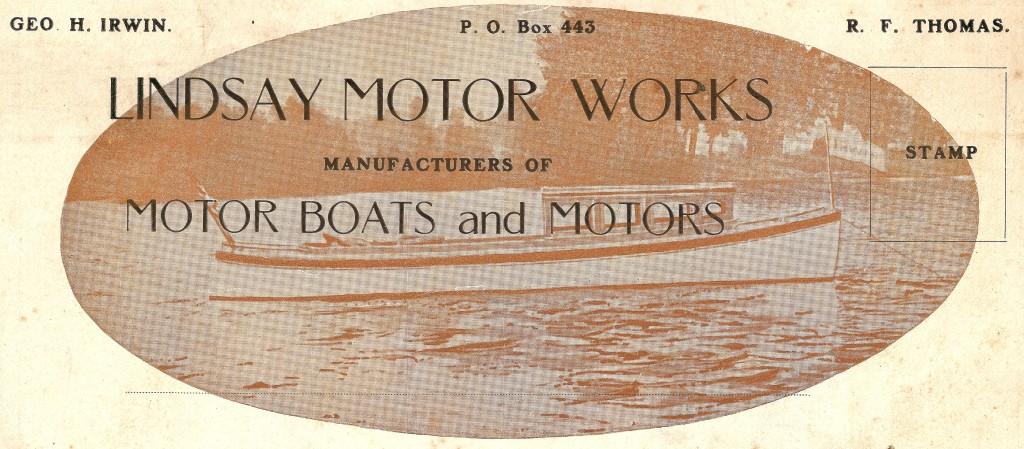
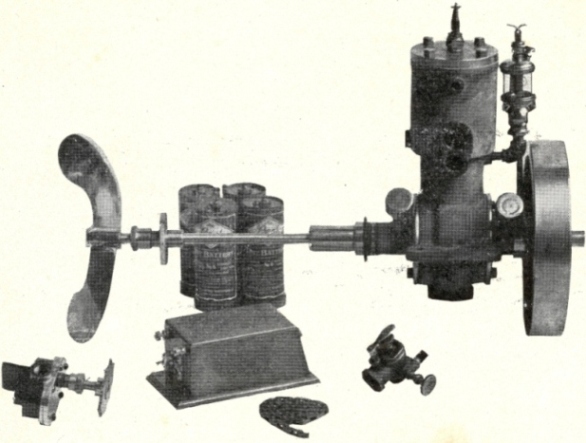 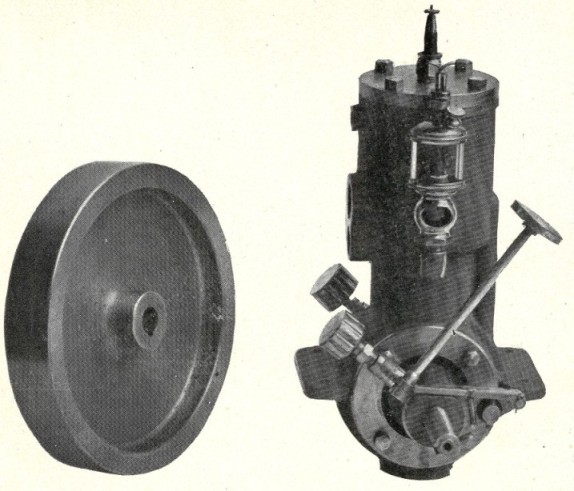
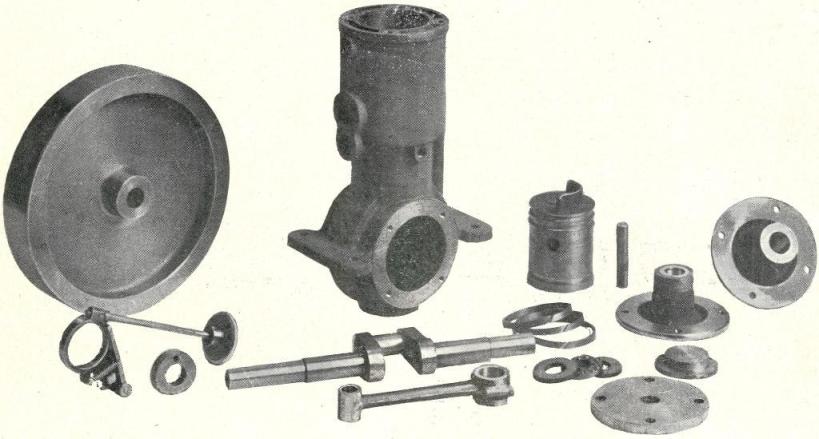
. |
    
RichardDurgee
Senior Member
Username: richarddurgee
Post Number: 2967
Registered: 11-2001
| | Posted on Monday, January 21, 2013 - 11:52 am: | 




|
*
The brass hat unknown eng that started this thread shares these characteristics with the Lindsay
1.Flywheel Looks identical
2.Knob handled timer
3.both engs have front and rear crankshaft bearing flanges
4. oiler port in same location
5 design of base and mount castings look very close
5.skip link chain drive w/pump
6.same over / under exhaust -intake casting
The two differences I see are the cylinder heads and the 4 bolt plate on the unknown engs port side at the top of the casting of the bypass port ? both of these differences could be just changes that took place in technology of each at the time ? I would dare to name the unknown brass hat a "Lindsay" until some thing proved it different ?
The black unknown posted above is truley a very old and unique marine engine, the knob lever timer and cylinder head are only shared traits with the brass hat unknown,the brass fuel air control is the only one like that I have ever seen, the square headed bolt heads are reminders of the transition from steam era late 1890's into early 1900's
Really good stuff ! Cool old marine engines. Appreciate the eng photos and the Lindsay information !
COMMENTS APPRECIATED !
* |
|
|
|


|


